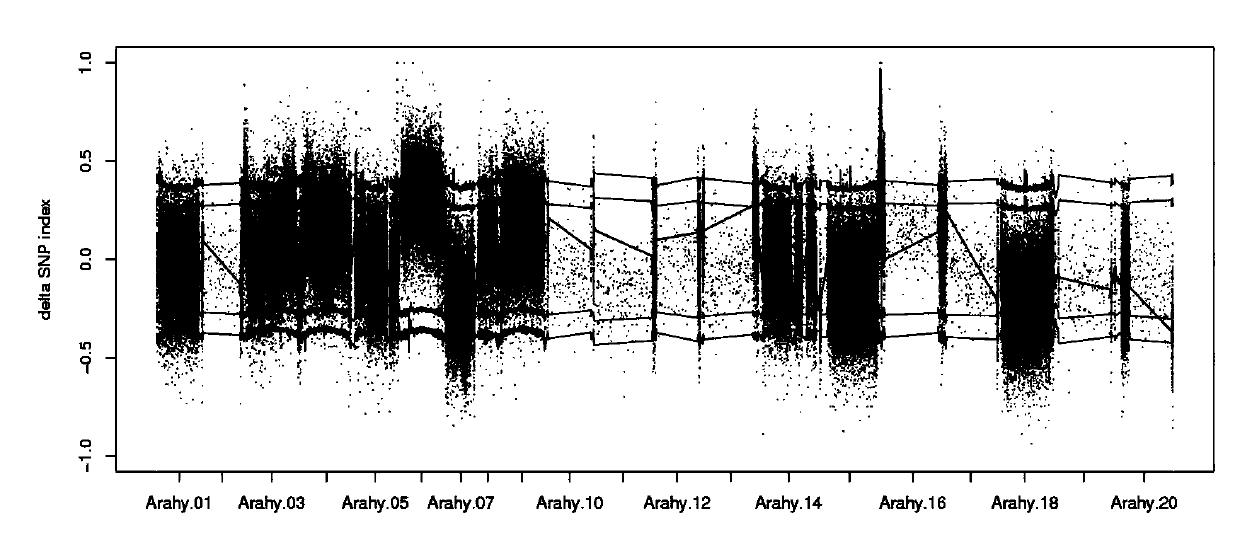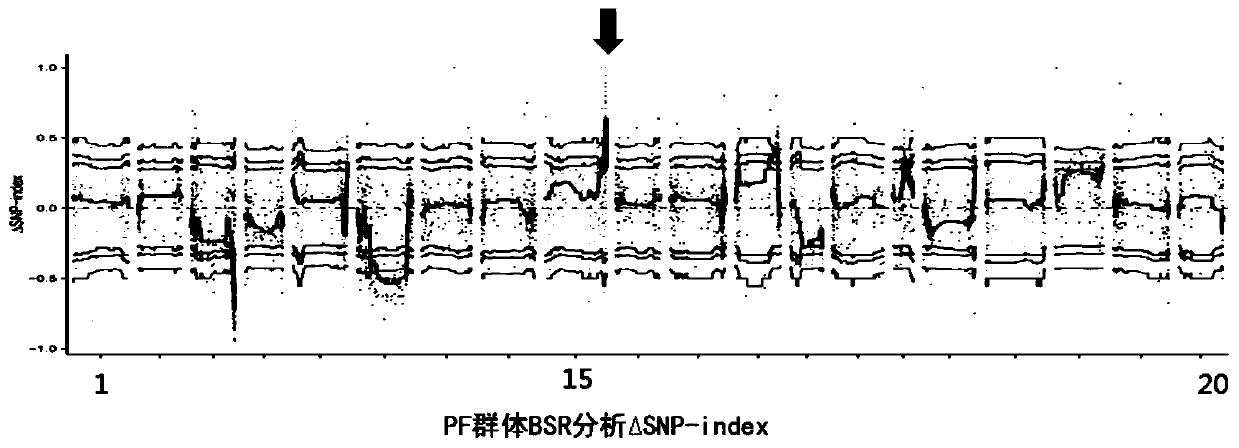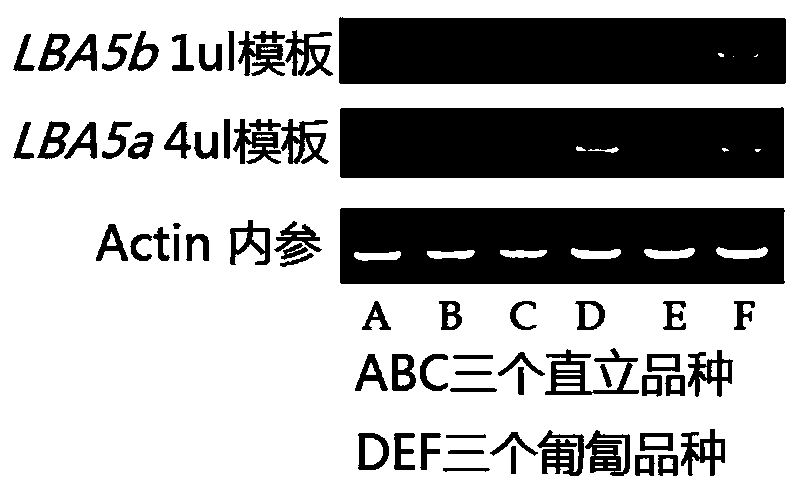Gene LBA5 for regulating and controlling lateral branch angle, growth habit and plant type of peanut, and application thereof
A technology of growth habit and gene, applied in the field of biotechnology improvement or genetic improvement, can solve the problems of not obtaining reports on peanut side branch angle or plant type-related genes and their applications, etc.
- Summary
- Abstract
- Description
- Claims
- Application Information
AI Technical Summary
Problems solved by technology
Method used
Image
Examples
Embodiment 1
[0029] Implementation 1: Preliminary positioning of side branch angles in peanuts using BSA-seq technology
[0030] In this example, a creeping plant-type peanut variety Xiaohongmao with a base angle of 90 degrees between side branches and the main stem and an upright plant-type peanut variety Henan Nanyang Peanut were used to construct a hybrid combination, and a strain propagation method was obtained. A recombinant inbred line RIL-HN-F composed of 223 individuals 6 ; The traits of side branch angle, growth habit and plant type were investigated for this recombinant inbred line, and 30 families with larger side branch angles were compared with Xiaohongmao parents and 26 families with smaller side branch angles were compared with Henan Nanyang parents. Similar families, then form 2 DNA mixed pools P (creeping) pool and Z (upright) pool, sequenced on the machine, the sequencing depth of both parents is >20×, and the sequencing depth of the mixed pool is >30×, and compared with ...
Embodiment 2
[0033] Implementation 2: Using BSR-seq technology to locate side branch angles in peanuts
[0034] In this example, the recombinant inbred line PF-F constructed by using another erect variety Pingdu 9616 and the creeping variety Florunner 5 , respectively selected 30 creeping strains and 30 erect strains, and carried out transcriptome sequencing on two parents, 30 creeping strains and 30 erect strains respectively, and the sequencing output of each progeny was not less than 3Gb Clean Date, the sequence output of each parental sample is not less than 6Gb Clean Date, and compared with the published cultivated peanut Tifrunner genome as a reference; using the SNP data found by transcriptome sequencing, 30 individuals are regarded as a mixed pool ΔSNP-index ( figure 2 ), the peanut side branch angle, growth habit and plant type related loci were also located at the end of the B05 chromosome, which was consistent with the HN population positioning results. At the same time, acco...
Embodiment 3
[0035] Implementation 3: Gene cloning, structure and function prediction of LBA5b
[0036] (1) LBA5b gene cloning:
[0037] Extract the total RNA from the side branch stem end of the creeping plant type peanut Tifrunner, reverse transcribe it into cDNA, use the cloning primer pair B5cd-F / R (its sequence SEQ ID NO: 17 / 18) to carry out PCR amplification with the cDNA of Tifrunner as a template, and PCR The product was recovered and purified by gel, connected to the T vector, transformed into Escherichia coli for sequencing, and the strain with the correct sequence was kept for later use; the specific PCR amplification reaction was: PCR system was 25ul, of which 2×Gflex PCR Buffer (Mg2+, dNTP plus) was 12.5ul, Template 1ul, 10um upstream and downstream primers 1ul, Tks Gflex DNA Polymerase 1ul, add water to 25ul; PCR reaction program: 94°C pre-denaturation 1min; 98°C denaturation 10s, 55°C annealing 15s, 68°C extension 30s, cycle 35 times;
[0038] (2) LBA5b gene structure analy...
PUM
 Login to View More
Login to View More Abstract
Description
Claims
Application Information
 Login to View More
Login to View More - R&D
- Intellectual Property
- Life Sciences
- Materials
- Tech Scout
- Unparalleled Data Quality
- Higher Quality Content
- 60% Fewer Hallucinations
Browse by: Latest US Patents, China's latest patents, Technical Efficacy Thesaurus, Application Domain, Technology Topic, Popular Technical Reports.
© 2025 PatSnap. All rights reserved.Legal|Privacy policy|Modern Slavery Act Transparency Statement|Sitemap|About US| Contact US: help@patsnap.com



